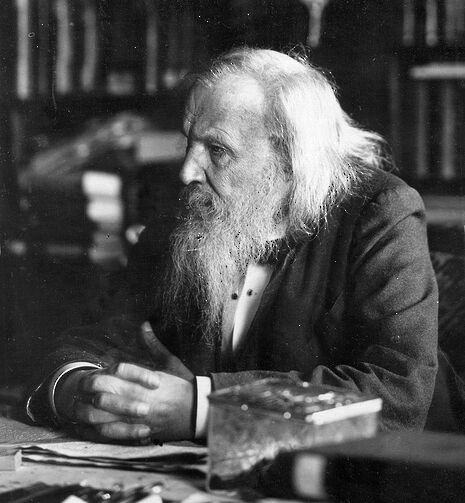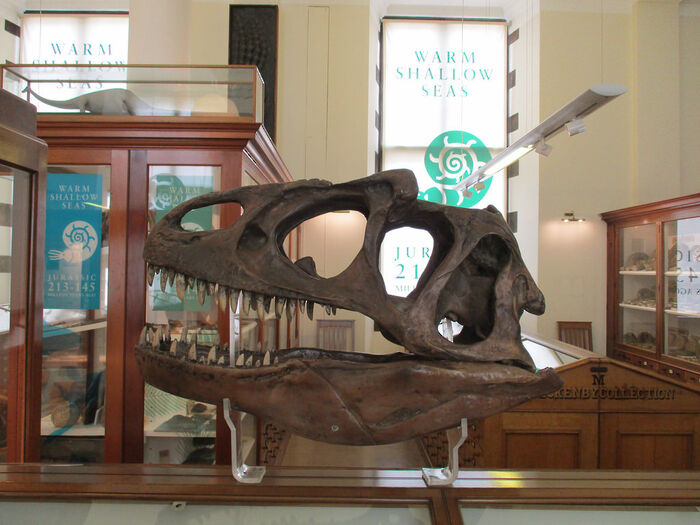Ordering the elements
Karoliina Pulkkinen delves into the history of the periodic table, and the many people who separately contributed to its discovery

The UN has declared 2019 as the International Year of the Periodic Table, and issued a logo to accompany the occasion. The official image depicts a bearded man next to a sphere of chemical elements. The bolded symbol ‘Md’ highlights that the man is Dmitri Ivanovich Mendeleev, the Russian chemist who we so often associate with the periodic system of the chemical elements.
However, Mendeleev was not alone in discovering the periodic system. Although 2019 marks 150 years since Mendeleev’s discovery, I suggest we should look at that logo, squint our eyes, and imagine another bearded man there. Before Mendeleev, Alexandre-Émile Béguyer de Chancourtois (1862), John Newlands (1864-6), William Odling (1864), Gustav Hinrichs (1869) and Julius Lothar Meyer (1864, 1868, 1870) created systems that historians recognise as the ‘precursors’ for the periodic table of today.
Considering that the logo picks up one discoverer in particular, it would be appropriate to ask why. What makes answering this question difficult is that the systems were similar. They all were discovered during the 1860s. Their creators organised their systems with both quantitative and qualitative data in mind. The quantitative data were the atomic weights, which gave (in Mendeleev’s words) the “organising principle” that allowed for a “rigorous system” of elements.
But the numbers alone were not what made the system. Especially interesting was that the linearity afforded by atomic weight ordering was compatible with displaying groups of qualitatively similar elements. For the Italian chemist and author Primo Levi, finding analogous elements in the same horizontal row made the periodic system even rhyme.
"Mendeleev predicted the properties of three missing elements"
We may seek to understand Mendeleev's recognition as the principal discoverer of the periodic system from the subtle differences between the systems. For example, Newlands was the only one to use order numbers that stood in for the empirical atomic weights. This design choice made his system appear theoretical. The president of the journal in which Newlands sought to publish his piece refused his venue to anything that appeared too theoretical. Doing so would have been a sin for a field that put empiricism and observation on a pedestal.
Where Newlands replaced atomic weights with order numbers, Meyer used highly precise weights of two decimal points to highlight experimental success in weight determination. Meyer was the only chemist to use such precise atomic weights. The double digits are just one indicator of Meyer’s attention to the quality of data. Meyer published a graph to depict the periodic relationship between atomic weights and volumes. Where atomic weight data was more dubious, Meyer drew the line of the graph with a dotted line and left gulfs on the graph where the data did not warrant assuming a generalised trend.
Apart from differences in individual design choices, the very formats for representing periodicity also varied greatly. Although tables were popular from the get-go, we can also find graphs (Meyer), screws (Béguyer de Chancourtois), and spirals with elements scattered like raisins in a Chelsea bun (Hinrichs).
The variety of formats and different design choices makes identifying the relevant differences between the systems difficult. Which one of the many differences between the systems made Mendeleev’s special? Commentators usually evoke two attributes in particular: Mendeleev’s was more complete and, crucially, he predicted the properties of three missing elements with its help.
It is undeniable that Mendeleev’s system was fuller. He discussed a greater number of chemical and physical properties than Newlands or Odling, and incorporated more elements than Meyer. Interestingly, Mendeleev also viewed completeness as an important requirement for a systematisation. Where using atomic weights as an organising principle allowed for a “rigorous” system, keeping in sight how elements formed compounds allowed for a complete system. Crucially, the more complete framework then helped Mendeleev to draw analogies from known elements to the properties of elements that would find a place in the system later.
However, the focus on Mendeleev’s predictions and the completeness of his system has led some to evaluate the systems of other chemists for their (lack) of completeness and predictions. This is problematic because there were good arguments against including all the elements and using the system for making predictions. Not all the elements were equally well known, so when an element was recently discovered and not very thoroughly characterised, there were grounds for excluding it. This was Meyer’s stance when he chose to only consider elements that he deemed well-characterised. Furthermore, although Meyer acknowledged that the periodic system could be used for making predictions, he saw that making predictions was only allowed to test the relationship between theories and empirical results. If the predictions were correct, then there were good grounds to believe that the theory might be useful for chemists in their future investigations.
Meyer was awarded the Davy Medal for his discovery jointly with Mendeleev in 1882, and a few years later, Newlands was awarded one as well. The complicated story of the discovery of the systems warrants that our celebrations marking its significance reflect that complexity. So when you partake in the periodic table-related celebratory events in 2069, in the 200th anniversary of the discovery, remember that we might as well broaden the celebrations from one year to a whole decade. And just as there is no single year when the system was discovered and developed, there was not just one person who formulated it. Several bearded individuals helped the elements find a home in the many graphs, tables, spirals and screws that constitute the early periodic systems of chemical elements.
 News / Uni Scout and Guide Club affirms trans inclusion 12 December 2025
News / Uni Scout and Guide Club affirms trans inclusion 12 December 2025 News / Pembroke to convert listed office building into accom9 December 2025
News / Pembroke to convert listed office building into accom9 December 2025 Features / Searching for community in queer Cambridge10 December 2025
Features / Searching for community in queer Cambridge10 December 2025 News / Uni redundancy consultation ‘falls short of legal duties’, unions say6 December 2025
News / Uni redundancy consultation ‘falls short of legal duties’, unions say6 December 2025 News / Gov declares £31m bus investment for Cambridge8 December 2025
News / Gov declares £31m bus investment for Cambridge8 December 2025









